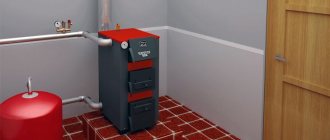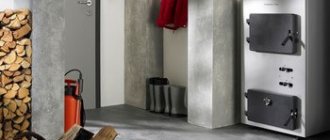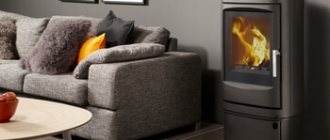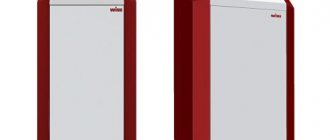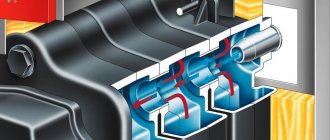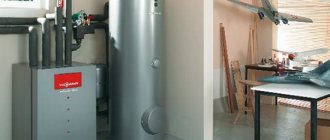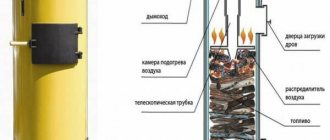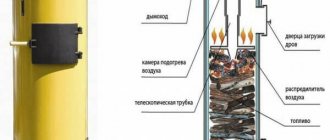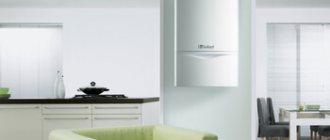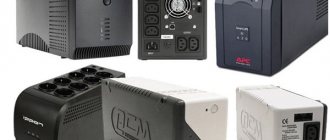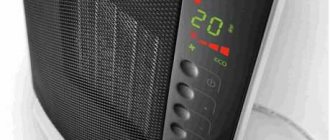With the onset of cold weather, purchasing a heating boiler is becoming an increasingly pressing problem for owners of private houses or workshops.
Today in stores there are many heating devices operating on both solid and combined fuels.
Solid fuel appliances burn wood, coal and other solid fuels.
Filling is usually done through a horizontal firebox.
Some devices are equipped with additional options.
To choose the right boiler for heating, you should take into account the features and characteristics of each model.
| Place | Name | Price |
| TOP 10 best classic solid fuel boilers | ||
| 1 | Kentatsu ELEGANT-03 17 kW | Find out the price |
| 2 | Protherm Beaver 50 DLO 39 kW | Find out the price |
| 3 | Teplodar Cooper Praktik 8 | Find out the price |
| 4 | Teplodar Cooper Praktik 14 14 | Find out the price |
| 5 | ZOTA Box 8 8 kW | Find out the price |
| 6 | Lemax Forward-20 | Find out the price |
| 7 | ZOTA Topol M 14 14 kW | Find out the price |
| 8 | Protherm Beaver 20 DLO 19 kW | Find out the price |
| 9 | Lemax Forward-12.5 13 kW | Find out the price |
| 10 | Lemax Forward-16 17 kW | Find out the price |
| TOP 6 best long-burning solid fuel boilers | ||
| 1 | Teplodar Cooper PRO-22 (2.0) | Find out the price |
| 2 | Stropuva Mini S8 8 kW | Find out the price |
| 3 | ZOTA Topol-22VK 22 kW | Find out the price |
| 4 | ZOTA Topol-16VK 16 kW | Find out the price |
| 5 | ZOTA Topol-32VK 32 kW | Find out the price |
| 6 | Stropuva S30 30 kW | Find out the price |
| TOP 5 best pyrolysis boilers | ||
| 1 | TRAYAN T15 15 kW | Find out the price |
| 2 | Bourgeois-K MODERN-12 12 kW | Find out the price |
| 3 | Bourgeois-K MODERN-24 24 kW | Find out the price |
| 4 | TRAYAN T20 20 kW | Find out the price |
| 5 | TRAYAN T10 10 kW | Find out the price |
Types and brief description
The devices differ in several features that you should pay attention to before purchasing.
Some boilers are not suitable for the type of power supply, others for the design.
Type of fuel
The heat source for solid fuel appliances is most often coal, wood or peat.
Fuel must be added every 4-8 hours, excluding long-burning models; adding firewood depends on the power, combustion mode and area to be heated.
Some devices are equipped with an additional thermometer, an auto-ignition system and a control panel.
Principle of fuel combustion
Pyrolysis - the basis of the device is the generation of heat by combustion of gas. Gas is extracted from wood by dry distillation from 600 to 800 degrees Celsius.
Water is heated by burning gas, which is produced by pyrolysis . This type of boiler has an increased efficiency of up to 91%. When operating such models, there is practically no emission of ash and soot.
Traditional - use heat from the combustion of filling material . Modern models use the top combustion technique, which ensures that each fuel burns alternately. Because of this, the amount of ash is reduced and efficiency increases to 80%.
Energy dependence
Volatile devices are devices that require power from the mains to regulate heating, temperature, ventilation and pump adjustment.
Non-volatile - these boilers do not require additional power sources . All control of temperature control, smoke removal, and water circulation is carried out mechanically.
No. 5. Number of circuits
Single-circuit boilers are responsible only for the heating system. There are also double-circuit boilers that allow you to provide a hot water supply system for a private home. This is very convenient, but when calculating the required power, you should definitely take this feature into account. In addition, there are boilers equipped with a hob .
Please note that solid fuel boilers are installed on the floor - there are no wall-mounted models.
How to choose and what to pay attention to
Type of fuel
If the client prefers coal when choosing fuel, then it is better to choose a boiler and steel . If firewood is used as fuel, then a cast iron model would be the best choice.
Power
This criterion determines how much area the device will be able to heat and how often it is necessary to add fuel.
NOTE!
For a large room and a two-story private house, a boiler with a capacity of 20-36 kW is suitable.
And for a small country house 14 kW is enough.
Weight and cost
The large weight and dimensions will cause inconvenience if the client does not have a special place to place the boiler.
Heavy weight also means higher installation and shipping costs . In addition, heavy boilers are much more expensive than lighter models.
Economical
The coefficient of a cast iron boiler is lower than that of a steel boiler. But a cast iron boiler takes longer to cool, thereby retaining heat for a longer time.
The time interval between fuel additions depends on the combustion time . Thus, economical cast iron models can keep warm all night.
Durability of the design
The default lifespan of equipment is about 10 years. But this depends on the careful handling of the owner and the quality of the materials from which the boiler is made.
If you choose a model with good materials, reliable assembly and properly care for the heating equipment, the device will last longer.
Safety
The equipment may become hot, creating a risk of burns.
Modern devices are equipped with a special layer of protection, and the walls of such devices do not heat up . In addition, protection is used on the door handles and a control panel is connected.
No. 3. Heat exchanger material
There are few options here. Heat exchangers can be:
- steel;
- cast iron.
It is difficult to say unequivocally which solid fuel boiler is better to choose - it all depends on the budget, operating conditions and personal requirements. Manufacturers produce both boilers.
Cast iron heat exchangers have the following advantages:
- they are assembled from separate sections , so their transportation and installation are easier. Moreover, if one of the sections is damaged, it can be replaced , so the durability of such boilers is excellent - up to 20 years or more;
- During operation, cast iron becomes covered with a film of iron oxide. This is dry rust, which hardly progresses, protecting the rest of the material from negative effects. Cast iron is more resistant to corrosion , so you will have to clean the heat exchanger less often;
- Cast iron retains heat longer , which is a plus. The downside is that it warms up more slowly.
Among the disadvantages are heavy weight, higher fragility than steel, and poor resistance to thermal shock. With a sharp change in temperature, a cast iron heat exchanger can easily crack, so avoid getting cold water into the heat exchanger that has not yet cooled down.
The advantages of a steel heat exchanger include:
- higher strength , and since such a heat exchanger is welded in a factory and comes out in one piece, it becomes possible to manufacture combustion chambers of complex configurations , thereby increasing efficiency;
- high resistance to sudden temperature changes . Boilers with such heat exchangers, as a rule, receive more advanced automation, since the temperature can be controlled freely without fear of damaging the structure;
- not as high weight as cast iron;
- faster heating, but also faster cooling.
On the other hand, steel is more susceptible to the development of corrosion processes . Despite the resistance to temperature changes, frequent such fluctuations may cause cracks to appear at welding points. If something happens, it will be impossible to repair a steel boiler - you will have to buy a new one, therefore the durability of such structures is lower.
Popular manufacturing companies
There are several reputable manufacturers that are preferred by clients:
- Stropuva - a Lithuanian brand that provides longer burning from one load of firewood. It has an interesting barrel-shaped design, which makes it possible to install the device in a small room. Lithuanian devices are quite expensive, but they are durable.
- Zota - for those who like to use firewood as fuel, the Russian brand is suitable. The devices are small in size and low in power. But they are also reliably constructed and affordable.
- Burzhuy-K is a Russian company that produces boilers independent of power supply, operating on pyrolysis. The cost of boilers varies from 40,000 to 76,000 rubles. The boilers have high power and retain heat for a long time.
Energy dependence – good or bad?
Volatile boilers have built-in special fans that will pump air into the chamber and are also equipped with special indicators. Non-volatile models are designed on the principle of natural air circulation.
They do not require power supply. However, the presence of forced air injection provides greater comfort to owners.
The best classic solid fuel boilers
Kentatsu ELEGANT-03 17 kW
Stylish brown solid fuel boiler made of steel . Power 17 kW, suitable for heating a room of 170 sq.m.
Quite a reliable design from a Japanese manufacturer, provides uniform heating of the room.
Copes well with harsh winters.
Characteristics:
- appliance type - solid fuel boiler;
- contours - single-circuit;
- power - 17 kW;
- placement - floor;
- energy independence - yes;
- control - mechanical;
- combustion chamber - open;
- body material - cast iron;
- fuel - coal, firewood;
- pressure - 4 bar;
- dimensions - 450*947*609 mm;
- boiler weight - 166 kg;
- price - 35950 rubles.
Advantages:
- uniform heating;
- cast iron material;
- reliable design;
- easy controls;
- spacious firebox;
- interesting design.
Flaws:
- heavy weight;
- high price;
- no additional features.
Protherm Beaver 50 DLO 39 kW
Solid fuel boiler made of cast iron material 39 kW . The heat is enough to heat a private home. It has a spacious firebox for wood and coal.
Unfortunately, it does not work on other types of fuel - natural gas or pellets.
For the convenience of the client, a thermometer and pressure gauge are built in.
Characteristics:
- unit - heating boiler;
- type of fuel - wood, coal;
- number of circuits - one;
- power - 39 kW;
- energy independence - yes;
- installation - floor;
- control - mechanics;
- combustion chamber - open;
- body material - cast iron;
- Efficiency - 90.2%;
- pressure - 4 bar;
- thermometer - yes;
- dimensions - 440*935*1040 mm;
- boiler weight - 380 kg;
- 92717 rubles.
Advantages:
- quality materials;
- cast iron doors;
- high power;
- 8 heat exchanger sections;
- uniform heating.
Flaws:
- heavy weight;
- high price;
- bulky;
- the bottom of the boiler heats up;
- It is possible to use only wood and coal.
Teplodar Cooper Praktik 8
Steel solid fuel boiler from the Russian manufacturer Teplodar, with a capacity of 8 kW . Heats a small room of 80 square meters.
Suitable for a country house or garage.
Characteristics:
- unit type - solid fuel boiler;
- contours - single-circuit;
- power - 8 kW;
- area - 80 sq.m;
- installation - floor;
- energy independence - yes;
- control - mechanical;
- material - steel;
- Heating element - preinstalled;
- fuel - firewood, coal, peat briquettes;
- functions - thermometer;
- connection of external control - yes;
- boiler weight - 60 kg;
- cost - 12,460 rubles.
Advantages:
- affordable price;
- uniform heat;
- various fuels;
- compact size and light weight;
- easy control.
Flaws:
- the power is not enough to heat a two-story house;
- The housing may become hot.
Teplodar Cooper Praktik 14 14
Classic solid fuel boiler from the Teplodar company with a capacity of 14 kW . Suitable for heating a country house up to 140 square meters.
Installed on the floor.
Characteristics:
- appliance - solid fuel boiler;
- contours - single-circuit;
- thermal power - 14 kW;
- heating area - 140 sq.m.;
- installation - floor;
- control - mechanics;
- non-volatile - yes;
- material - steel;
- Heating element - preinstalled;
- fuel - coal, peat briquettes, firewood;
- thermometer - yes;
- dimensions - 420*655*630 mm;
- boiler weight - 68 kg;
- cost - 15,745 rubles.
Advantages:
- low price;
- compact dimensions;
- a light weight;
- quality materials;
- good heating of the room;
- spacious firebox for storing fuel.
Flaws:
- firewood burns quickly;
- before going to bed you need to add fuel.
ZOTA Box 8 8 kW
Solid fuel heating unit with a power of only 8 kW . Suitable for a small room - a garage, country house or workshop.
The small appliance is equipped with a hob on which you can heat water or food.
Characteristics:
- boiler type - solid fuel;
- contours - single-circuit;
- power - 8 kW;
- placement - floor;
- energy independence - yes;
- control - mechanics;
- combustion chamber - open;
- Efficiency - 70%;
- material - steel;
- hob - yes;
- Heating element - optional;
- fuel - coal and firewood;
- thermometer - yes;
- dimensions - 380*460*630 mm;
- boiler weight - 71 kg;
- cost - 16,100 rubles.
Advantages:
- compactness;
- low cost;
- presence of a hob;
- quickly warms up a small room;
- economical fuel consumption.
Flaws:
- low power;
- at night it is necessary to throw it up.
Lemax Forward-20
A stylish solid fuel device with a power of 20 kW for heating a room of 200 m2 . It features a spacious firebox located on the top panel.
Can be connected to a water heating system. Heats evenly and maintains temperature well.
Characteristics:
- appliance - heating boiler;
- fuel - solid: firewood, coal, coke;
- contours - single-circuit;
- power - 20 kW;
- non-volatile - yes;
- combustion chamber - open;
- Efficiency - 75%;
- control - mechanical;
- installation - floor;
- material - steel;
- thermometer - yes;
- boiler weight - 78 kg;
- fuel loading - vertical;
- cost - 19970 rubles.
Advantages:
- works on any solid fuel;
- quality steel;
- convenient top fuel loading;
- compact dimensions;
- environmental friendliness.
Flaws:
- firewood burns quickly;
- at night it is necessary to throw it up.
ZOTA Topol M 14 14 kW
A bright solid fuel unit with a power of 14 kW for heating a room with a maximum area of 140 m2 . It is possible to install a heating element to maintain the room temperature.
Characteristics:
- unit - heating boiler;
- contours - single-circuit;
- power - 14 kW;
- heated area - 140 m2;
- placement - floor;
- energy independence - yes;
- control - mechanics;
- combustion chamber - open;
- Heating element - optional;
- fuel - coal, firewood;
- thermometer - yes;
- boiler weight - 113 kg;
- cost - 14391 rubles.
Advantages:
- compact dimensions;
- sufficient power;
- the ability to connect a heating element;
- holds heat well;
- acceptable cost.
Flaws:
- firewood burns quickly;
- the walls heat up;
- no additional features.
Protherm Beaver 20 DLO 19 kW
A high-quality unit made of cast iron material with a power of 19 kW . Suitable for heating a private house with an area of 190 m2.
The heat exchanger includes 4 sections.
Characteristics:
- type of device - solid fuel boiler;
- number of circuits - one;
- power - 19 kW;
- area - 190 square meters;
- placement - floor;
- energy independence - yes;
- control - mechanical;
- material - cast iron;
- fuel - coal, firewood;
- thermometer - yes;
- dimensions - 440*935*640 mm;
- boiler weight - 230 kg;
- cost - 52,000 rubles.
Advantages:
- simple controls;
- reliable design;
- large ash pan;
- straight seams;
- good painting;
Flaws:
- high price;
- Not very roomy firebox.
Lemax Forward-12.5 13 kW
An almost silent solid fuel unit with a power of 13 kW for heating an area of 130 m2 . Compact dimensions allow the device to be installed in a small room.
The power is enough to heat a country house.
Characteristics:
- device - solid fuel;
- number of circuits - single-circuit;
- power - 13 kW;
- placement - floor;
- energy independence - yes;
- control - mechanics;
- combustion chamber - open;
- Efficiency - 75%;
- material - steel;
- thermometer - yes;
- fuel loading - vertical;
- boiler weight - 70 kg;
- cost - 14960 rubles.
Advantages:
- fast heating;
- compactness;
- reliable assembly;
- works silently;
- low cost;
- decent power.
Flaws:
- when laying coal there is a lot of dirt around;
- inconvenient to clean.
Lemax Forward-16 17 kW
A variation of the previous model, but with increased power to 17 kW . It consumes fuel quite economically. Warms up a private home well.
Features reliable build quality.
It works silently.
Characteristics:
- unit - boiler;
- fuel - coal, firewood, coke;
- number of circuits - one;
- power - 17 kW;
- area - 170 m2;
- installation - floor;
- non-volatile - yes;
- control - mechanics;
- combustion chamber - open;
- Efficiency - 75%;
- thermometer - yes;
- boiler weight - 73 kg;
- price - 16,500 rubles.
Advantages:
- low noise level;
- uses fuel economically;
- environmentally friendly;
- safe;
- vertical loading of firewood;
- convenient use.
Flaws:
- non-standard chimney diameter.
No. 8. Combustion chamber volume
The larger the volume of the combustion chamber, the more fuel can be loaded, and the less often you have to run to the firebox and add a new portion. In the characteristics of the boiler, it is customary to indicate such an indicator as the ratio of fuel loading volume to boiler power , measured in l/kW . Since a steel boiler, with the same power as a cast iron one, will have slightly more compact parameters, for it this ratio is 1.6-2.6 l/kW. For cast iron boilers – 1.1-1.4 l/kW. The higher this indicator, the less often you will have to run to the boiler.
Boilers with top-loading fuel usable volume , and in this case the fuel is distributed more evenly. some effort will be required to distribute the fuel evenly .
The best long-burning solid fuel boilers
Teplodar Cooper PRO-22 (2.0)
The main technical feature of the Teplodar Kupper PRO-22 (2.0) boiler is that it supports different types of fuel. In the basic configuration, the boiler runs on coal, wood or fuel briquettes . Additionally, a heating element or gas burner can be installed in the heating device to maintain heat.
Secondary air is constantly supplied to the combustion chamber, which ensures 12 hours of continuous combustion on one load of coal. The boiler can be installed even in houses where pressure surges in the system are often observed. The model is capable of operating at pressures of up to 3 atmospheres, and the durable body successfully withstands changes.
The fuel hopper is quite spacious (volume 51 l), and since it has an elongated shape, firewood up to 40 cm long can be placed inside . The manufacturer also took care of the convenience of loading fuel.
The loading door is quite wide and is located at a slight slope, and thanks to the handles made of heat-resistant silicone, the user will not get burned if he accidentally touches them.
Along with the boiler, the user receives a gate valve, a capillary thermometer and accessories necessary for cleaning. At the same time, the future owner should take into account that the kit does not include chimney elements, a heating element with a control panel and a draft regulator . They must be purchased and installed separately.
Specifications:
- heating area up to 220 sq.m;
- maximum pressure 3 atm;
- weight 139 kg;
- dimensions (WxHxD) 41.5x96.7x74.5 cm.
- perfectly warms large houses;
- very durable and high quality metal case;
- spacious fuel bunker;
- there are safe silicone handles on the door;
- You can load firewood up to 40 cm long.
- fuel burns out quickly, so the operation of the boiler must be constantly monitored;
- Over time, the handles on the door become loose.
Stropuva Mini S8 8 kW
Bright solid fuel boiler with a safety valve, power 8 kW . Suitable for heating a room of 80 m2. The fuel burns for up to twenty hours, the temperature is enough for the whole night.
Characteristics:
- type of device - solid fuel boiler;
- type of combustion - long;
- contours - single-circuit;
- power - 8 kW;
- area - 80 m2;
- placement - floor;
- energy independence - yes;
- control - mechanics;
- combustion chamber - open;
- fuel - firewood, wood briquettes;
- safety valve - yes;
- thermometer - yes;
- boiler weight - 145 kg;
- price - 53,000 rubles.
Advantages:
- compactness;
- long burning;
- ease of use;
- reliable handles;
- does not require power supply;
- robust design.
Flaws:
- high price;
- heavy weight;
- it is difficult to wash off carbon deposits from the cladding;
- Not very convenient for loading firewood.
ZOTA Topol-22VK 22 kW
A high-quality solid fuel device with a power of 22 kW, which is enough to heat an area of 220 m2 . Convenient loading consists of two sections for storing firewood.
Characteristics:
- appliance - solid fuel boiler;
- contours - single-circuit;
- power - 22 kW;
- placement - floor;
- control - without control panel;
- fuel - coal, coal briquettes, firewood, wood briquettes;
- thermometer - yes;
- boiler weight - 128 kg;
- price - 36,860 rubles.
Advantages:
- various types of fuel;
- long burning;
- economical consumption;
- convenient operation;
- reliable design.
Flaws:
- heavy weight;
- no control panel.
ZOTA Topol-16VK 16 kW
A decent model of a solid fuel boiler with two sections for storing fuel . Designed for heating a small private house or workshop of 160 m2.
Ensures long burning of wood or coal.
Options:
- unit - heating boiler;
- fuel - coal, firewood, coal and wood briquettes;
- power - 16 kW;
- placement - floor;
- control - without control panel;
- Efficiency - 75%;
- thermometer - yes;
- boiler weight - 108 kg;
- cost - 30,100 rubles.
Advantages:
- heats up quickly;
- gives uniform heat;
- quality materials;
- long burning;
- possibility of laying briquettes;
- easy control.
Flaws:
- high price;
- heavy weight;
- no control panel.
ZOTA Topol-32VK 32 kW
Reliable solid fuel unit with power up to 32 kW . Capable of heating an area of 320 square meters. It is possible to install an additional heating element and connect external control.
Excellent for a country house, ensures long burning of fuel.
Characteristics:
- type of device - solid fuel boiler;
- number of circuits - one;
- power - 32 kW;
- area - 320 m2;
- installation - floor;
- energy independence - yes;
- control - mechanics;
- Efficiency - 75%;
- fuel - coal, coal briquettes, wood briquettes, firewood;
- thermometer - yes;
- connection of external control - yes;
- boiler weight - 143 kg;
- price - 40,370 rubles.
Advantages:
- fast heating;
- reliable assembly;
- simple controls;
- opportunity to purchase a burner;
- economical fuel consumption;
- stylish design.
Flaws:
- heavy weight;
- high price.
Stropuva S30 30 kW
A full-fledged solid fuel boiler with a power of 30 kW for heating a room of 300 m2 . Equipped with thermometer and safety valve.
Made of high quality steel, the material does not become red-hot when the boiler heats up.
The only boiler that continues burning for up to 31 hours.
Characteristics:
- appliance - solid fuel boiler;
- power - 30 kW;
- area - 300 sq.m.;
- placement - floor;
- control - mechanical;
- contours - one;
- non-volatile - yes;
- combustion chamber - open;
- Efficiency - 85%;
- material - steel;
- fuel - firewood, wood briquettes;
- thermometer - yes;
- safety valve - yes;
- boiler weight - 257;
- price - 89,800 rubles.
Advantages:
- long burning;
- uniform heat;
- fast heating;
- quality materials;
- presence of a thermometer;
- economical fuel consumption.
Flaws:
- high price;
- heavy weight;
- bulky.
Piping diagram without pump
In the absence of power supply or unstable operation of the network, a heating circuit with natural coolant circulation is constructed. Another name is gravitational. It does not require a pump, which means it is energy independent.
Principle of operation
The movement of the coolant through the pipes is ensured by convection - the tendency of a less dense heated medium to move upward under the influence of Archimedean force. Hot water is displaced from the boiler tank into the supply by colder water coming from the “return”.
Piping diagram for a solid fuel boiler without a pump.
Necessary tools and consumables
For installation you will need:
- perforator;
- levels – rack and spirit level;
- roulette;
- adjustable wrench "parrot";
- screwdrivers, pliers;
- for a polypropylene circuit - a special heater for welding plastic parts.
Materials needed:
- brackets for fastening pipes and radiators;
- dowels;
- tow or plumbing linen (FUM tape is not suitable due to the high temperature of the transported medium).
After heating, the volume of coolant will increase. To compensate, an expansion tank is inserted into the system.
Due to the absence of excess pressure in the gravity circuit, a cheap open type option is used.
Radiators, pipes, couplings and other fittings are also needed.
How to do
To create convection and minimize the hydraulic resistance of the circuit, it is built according to the following rules:
- The boiler is located at least 0.5 m below the radiators. In different rooms, marks at the same height are made using a spirit level.
- The first section from the supply pipe of the device is made vertical to the ceiling. This is an accelerating collector; it creates a strong convection pressure. The lowering is made along the corner of the room where the first radiator is located.
- Large pipes are used - with an internal diameter of 30-40 mm. As this parameter increases, the hydraulic resistance decreases.
- Horizontal sections are mounted with a large slope - 1 cm/m. This will make it easier for the cold liquid to drain back to the boiler.
The boiler is positioned to reduce hydraulic resistance.
The circuit must have a minimum of turns, fittings and other elements that increase hydraulic resistance.
The expansion tank is placed at its highest point. In order not to disturb aesthetics, the tank is often installed in the attic. In this case, the product must be insulated.
Minuses
The gravity system has a number of disadvantages:
- The length of the contour cannot exceed 30 m.
- Heat is distributed unevenly, radiators farthest from the boiler are colder than those closest to them.
- Due to the significant temperature difference between the “supply” and “return”, the heater experiences high loads.
- Large diameter pipes are needed, which increases the cost of the project and increases the volume of water.
- Through an open expansion tank, oxygen enters the working environment, causing corrosion of metal surfaces and airing of the circuit.
- It is impossible to operate the device in low-performance mode, which is required in the off-season.
The best pyrolysis boilers
TRAYAN T15 15 kW
Model of a pyrolysis boiler from a Russian manufacturer powered by solid fuel . Made of high quality steel, the material does not heat up and is easier to clean than cast iron models.
After prolonged use, the paint may peel off.
Options:
- boiler type - solid fuel;
- type - pyrolysis;
- thermal power - 15 kW;
- heated area - 160 m2;
- installation - floor;
- energy independence - yes;
- control - mechanical;
- Efficiency - 85%;
- fuel - firewood, coal;
- boiler weight - 230 kg;
- pressure - 95%;
- price - 44370 rubles.
Advantages:
- low noise level;
- uniform heating of the room;
- heats up quickly;
- reliable assembly;
- quality material;
- good paint job.
Flaws:
- high price;
- heavy weight.
Bourgeois-K MODERN-12 12 kW
Solid fuel boiler of rich bright color, made of high quality steel . A power of 12 kW is enough to heat a room of 120 m2.
Works on wood, coal, peat briquettes.
Suitable for a country house or workshop.
Options:
- type - boiler;
- fuel - firewood, coal, wood briquettes, peat;
- number of circuits - single-circuit;
- power - 12 kW;
- heated area - 120 m2;
- combustion chamber - open;
- Efficiency - 92%;
- control - mechanical;
- installation - floor;
- thermometer, pressure gauge - yes;
- boiler weight - 220 kg;
- dimensions - 400*1070*780 mm;
- cost - 59,900 rubles.
Advantages:
- ability to use a variety of fuels;
- high efficiency;
- presence of a thermometer;
- stylish design;
- adequately warms the room;
Flaws:
- overcharge;
- heavy weight;
- inconvenient ash pit.
Bourgeois-K MODERN-24 24 kW
A solid fuel boiler from Russian manufacturers with a power of 24 kW, which is enough to heat a private country house with an area of 250 m2.
The device is installed on the floor and runs on solid fuel.
Characteristics:
- type - solid fuel boiler;
- number of circuits - single-circuit;
- thermal power - 24 kW№
- heating area - 250 m2;
- installation - floor;
- non-volatile - yes;
- control - mechanics;
- fuel - coal, firewood, pellets, wood briquettes, peat;
- maximum pressure - 4.5 bar;
- thermometer - yes;
- pressure gauge - yes;
- dimensions - 500*1180*800 mm;
- boiler weight - 310 kg;
- cost - 76,050 rubles.
Advantages:
- high power;
- convenient control;
- The ash pan is easy to clean;
- quality materials;
- reliable assembly.
Flaws:
- high price;
- heavy weight;
- bulky.
TRAYAN T20 20 kW
Solid fuel boiler with a capacity of 20 kW for heating private houses, workshops and other premises . It is heated with coal and wood.
Installation is carried out on the floor, on special legs.
Thick steel ensures the durability of the device.
Characteristics:
- device type - solid fuel boiler;
- contours - one;
- maximum power - 20 kW;
- area - 220 sq.m.;
- installation - floor;
- energy independence - yes;
- control - mechanics;
- combustion chamber - open;
- fuel - firewood, coal;
- functions - thermometer, pressure gauge;
- dimensions - 460*980*760 mm;
- boiler weight - 260 kg;
- price - 51990 rubles.
Advantages:
- fast heating;
- long burning of fuel;
- the manufacturer promptly responds to customer questions;
- ease of use;
- durable materials.
Flaws:
- high price;
- heavy weight;
- bulky;
- small firebox.
TRAYAN T10 10 kW
A solid fuel device with a power of 10 kW for heating a room of 90 m2 . Suitable for warming up a small studio, country house or workshop.
Characteristics:
- type of device - solid fuel, pyrolysis boiler;
- power - 10 kW;
- number of circuits - single-circuit;
- area - 90 m2;
- installation - floor;
- thermometer - yes;
- non-volatile - yes;
- control - mechanics;
- combustion chamber - open;
- water pressure - 4.5 bar;
- dimensions - 380*860*670 mm;
- boiler weight - 180 kg;
- cost - 38,990 rubles.
Advantages:
- high-quality assembly;
- convenient use;
- easy to clean ash pan;
- reliable materials;
- fast heating.
Flaws:
- heavy weight;
- high price;
- low power.
Power
When choosing a boiler for heating, you should take into account the area of the heated room, the height of the ceilings, the presence of a building insulation system and the level of heat loss, temperature conditions in the climatic zone.
It is believed that with a ceiling standard of 3 m, to heat an area of 10 sq. m requires 10 kW of power. Additionally, it is advisable to provide 1-2 kW of reserve.
Pellet automatic units
One of the most common types of heat generators is systems powered by wood pellets. The operating principle of pellet boilers is in many ways similar to other automatic units, but there are also characteristic features.
If you trace the similarities and differences, as well as the advantages and disadvantages of such models, it will be easier to choose the appropriate option.
Principle of operation
The basic design of pellet systems is no different from other common automatic heat generators. Combustible materials are loaded into the fuel bunker, from where they are gradually poured onto the screw conveyor. The shaft transfers the granules to the combustion chamber, where the coolants are heated.
Differences in operation can be seen at the fuel supply stage:
- After starting the auger, the mechanism directs the pellets first into a flexible hose or plastic tube, which dumps the pellets into a dispenser.
- In the metering device, the second shaft measures the required portions of fuel and moves them to the reed valve.
- The gate opens and the pellets are dumped onto a third auger, which transfers a measured amount into the firebox.
The described algorithm may vary slightly depending on the implementation of a particular model.
Advantages
The economic and operational benefits of pellet heating systems are mainly related to the merits of the type of fuel used.
Wood pellets are not inferior to traditional combustible materials in terms of calorific characteristics, but have a number of advantages:
- lower cost;
- economical consumption, which leads to longer operating time without additional loading;
- increased environmental friendliness;
- minimum amount of combustion products in the ash pan.
As for the advantages of the boilers themselves, as a rule, they are smaller in size compared to units operating on other types of fuel.
Flaws
In addition to the listed advantages, there are also disadvantages.
Since the flame in most pellet models has a horizontal direction, overheating of the boiler structural elements may occur. In addition, the efficiency and power of such equipment is lower.
Additional recommendations
To prevent the heat exchanger from becoming overgrown with scale, fill the system only with demineralized water. Often homeowners collect rainwater for these purposes.
For the same reason, it is better to purchase a model with a cooling coil in the heat exchanger, and not with water supplied directly to the tank.
Do not smoke in a house with an aluminum radiator system. Hydrogen is formed in them, which comes out through an air vent or Mayevsky valve.
During the period of inactivity of the heater, the heat exchange in its tank takes on the opposite direction. To ensure that the water in the circuit cools more slowly, it is recommended to create a bypass with taps through which the medium will move around the device.
By the way, it’s not difficult to make a solid fuel boiler with your own hands.
Design features
Anyone who wants to purchase such a unit must take this into account.
Loading can be frontal (mostly with a cast iron heat exchanger) and top (in these often steel).
Optional equipment
To increase efficiency, a heat accumulator is installed between the boiler and the heating circuit - a water-filled container in a mineral wool shell. The solid fuel is constantly operated in nominal performance mode with maximum efficiency, heating the contents of the tank to +95°C.
A heat accumulator is installed to increase efficiency.
Hot water is withdrawn from the battery automatically as the medium in the circuit cools.
In a country house and other small buildings, a hydraulic arrow is used to connect the “warm floor”. This is a collector installed vertically. Thanks to this orientation, the temperature varies with height; the environment below is colder. Radiators are connected to the upper part, and “warm floors” are connected to the opposite part.
Fuel loading methods
- Traditional, that is, by hand. Pros: simple structure, low cost. Disadvantages - constant supervision of equipment, increased difficulty in maintaining the required temperature regime.
- Semi-automatic. It is loaded by a person, but control already lies with automation tools. Advantages: precise adjustment of the degree of heat. Flaws – the need for equipment monitoring.
- Fully automatic. There is a hopper from which the supply comes. Advantages - of all the options presented, maximum efficiency, simplified setup of all processes, long autonomy. Disadvantages - high cost, dependence on electricity, difficult operation and elimination of defects, large size.
Coolant temperature
This is of great importance, it must exceed the “dew point”. Otherwise, acid will begin to form from steam and oxidation products, which will lead to the destruction of the unit.
- If you forcibly turn off the circulation, this will lead to a temperature difference in the boiler unit and heating radiators.
- As a result, the likelihood of water hammer and deformation increases. Now about inertia. It should be remembered that in such devices maintaining a suitable heat index is problematic. This problem can be solved in several ways.
One of them is the presence of a cooler. Both external and built into the case.
Another solution is a storage tank. It increases efficiency and allows you to control heat transfer.
